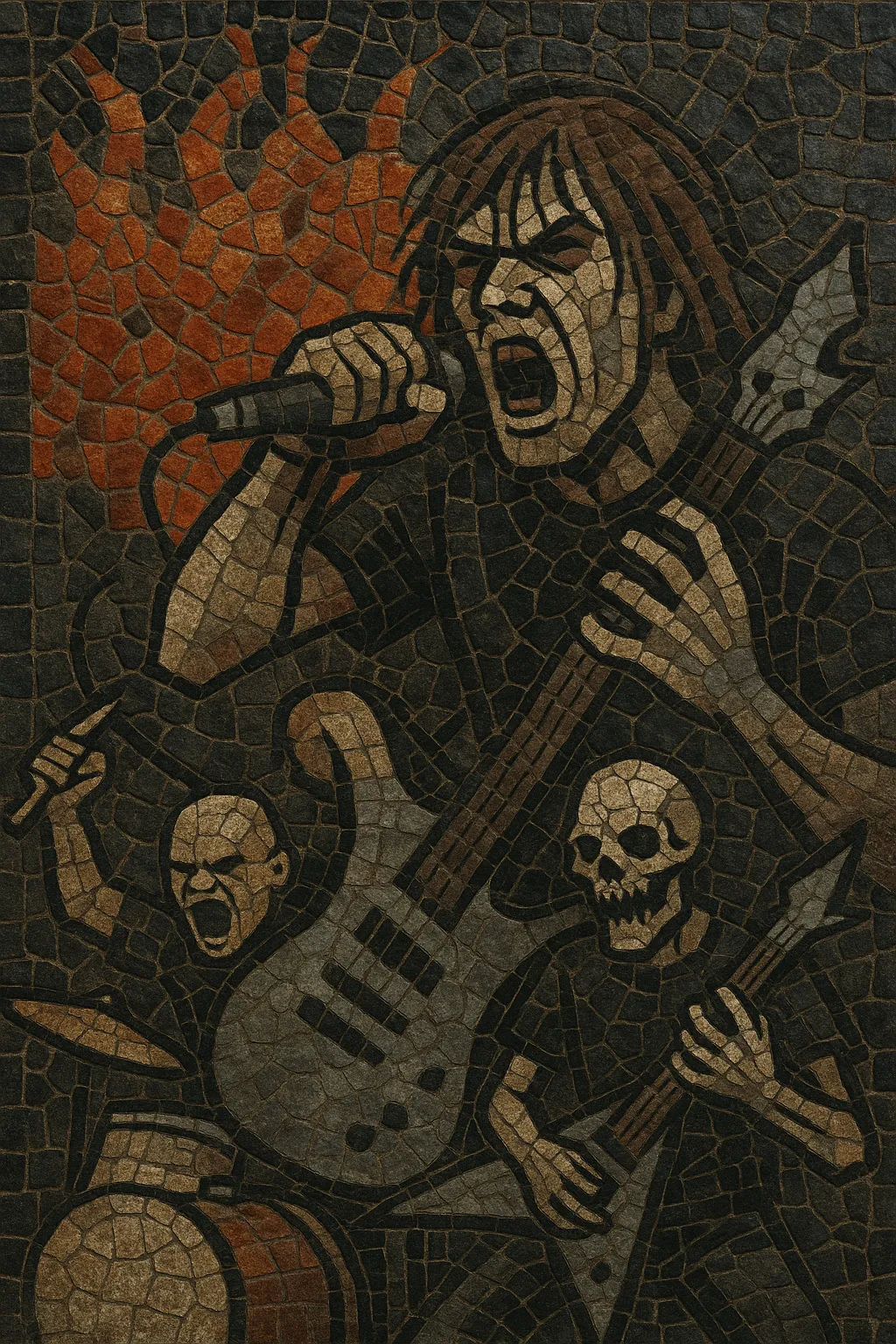
Grindcore is an extreme fusion of hardcore punk and metal characterized by blisteringly fast tempos, blast-beat drumming, heavily distorted guitars, and harsh, screamed or growled vocals. Songs are often extremely short—sometimes mere seconds—favoring intensity over conventional structure.
The style ranges from politically charged and socially conscious lyrics to grotesque, gore-soaked imagery (especially in substyles like goregrind). Production can be raw and abrasive or tightly modern, but the aesthetic consistently emphasizes sonic extremity, density, and cathartic impact.
Grindcore crystallized in the United Kingdom in the mid-1980s, especially around Birmingham. Napalm Death’s early recordings (notably the 1987 album “Scum” and BBC Peel Sessions) defined the genre’s blueprint: ultra-fast blast beats, sub-minute songs, and politically charged lyrics. Parallel and precursor influences included American acts like Siege and Repulsion (whose material, recorded in 1986 and released as “Horrified”), which pushed hardcore punk and thrash into unprecedented speed and abrasion. UK crust-punk energy (Discharge, Extreme Noise Terror) and extreme metal aggression (early death and thrash metal) completed the hybrid.
Carcass brought a gore-themed, down-tuned variant that would inspire goregrind, while Terrorizer’s “World Downfall” (1989) helped codify the genre’s transatlantic footprint. Independent labels such as Earache Records were crucial in disseminating the sound globally.
The 1990s saw scenes bloom in the United States and Europe. Bands like Brutal Truth, Extreme Noise Terror, and Agathocles expanded the template—some veering toward political grind, others toward raw, lo-fi ferocity. In Scandinavia, Nasum refined a tight, modern production approach and razor-sharp songwriting that influenced a new generation. During this decade, grindcore’s cross-pollination with death metal intensified, laying foundations for hybrids like deathgrind.
The 2000s introduced high-fidelity studio techniques without sacrificing extremity. Pig Destroyer’s “Prowler in the Yard” (2001) showcased narrative intensity and precision riffing; Agoraphobic Nosebleed popularized drum programming at breakneck speeds, feeding into the rise of cybergrind. Festivals such as Obscene Extreme (founded in 1999 in the Czech Republic) became hubs for the global scene. Meanwhile, powerviolence and math-influenced hardcore intersected with grindcore’s speed and brevity, diversifying rhythmic and structural ideas.
A new wave of bands fused grindcore with noise, mathcore, blackened elements, and experimental electronics. Short-form tracks and viral micro-songs found new audiences in the streaming era, while longstanding pioneers continued to release influential records. The genre remains a potent vehicle for political critique, sonic extremity, and underground community-building worldwide.

